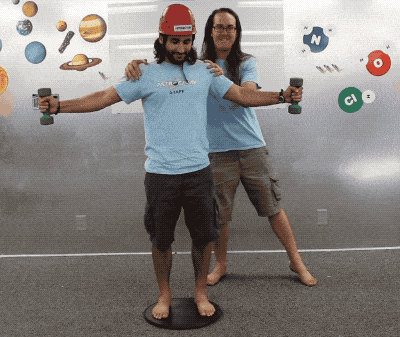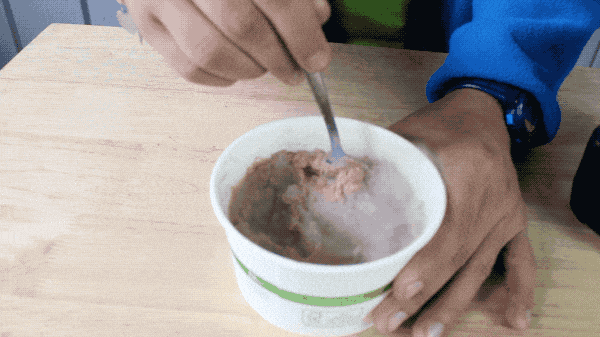
The conservation of linear momentum is easy to see, especially when you play billiards! Collisions or impacts are great examples of the conservation of momentum. But have you ever experienced the conservation of angular momentum? If you are a very talented ice skater, then the answer is probably yes, but for the rest of us we need to get creative.
Angular momentum is defined as the product of an object’s moment of inertia (the resistance of angular acceleration) with it’s angular velocity (how fast it is spinning).
To see the conservation of angular momentum in action, you need to make a change to your system. You can do so in a couple of ways. The first way is by changing your moment of inertia. To do this at home, grab a chair that can spin, some weights, and supervision (just in case you get going too fast).
Sit in the chair, start with the weights in your hands as far away from your body as possible. Have your supervisor give you an initial spin. Then, bring your weights in towards your body. You should feel yourself spin faster and faster! You can now bring your weights out away from your body to slow down and come to a stop. By decreasing your moment of inertia, bringing your arms in, you speed up to conserve your angular momentum. In a perfect system (no gravity, friction, or other outside forces) you would be able to move your arms toward and away from your body, increasing and decreasing your rotational speed forever!
The second way is to change your angular velocity. Most of you have probably felt a smaller version of this effect with a fidget spinner. When you get it going really fast and then try to move it to a different angle you will feel a force that is opposing the movement. The same thing happens with this bicycle tire. Spin it really fast and then change it’s angle. It will push you in the opposite direction to maintain angular momentum!
So the next time you find something spinning, stop and take a moment to see what you can change about the system. Have fun with these experiments and let us know what you think!
Written By: Mimi Garai






